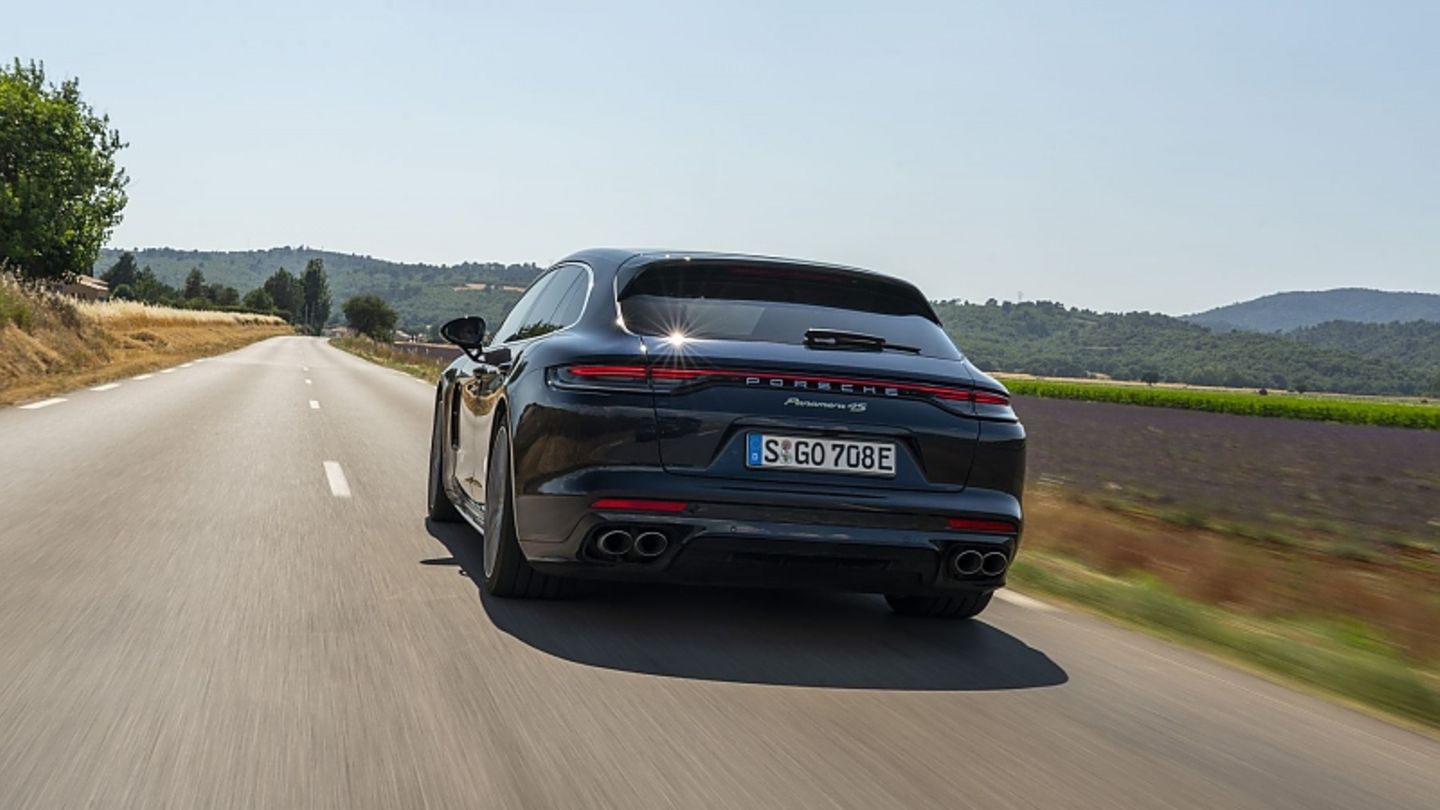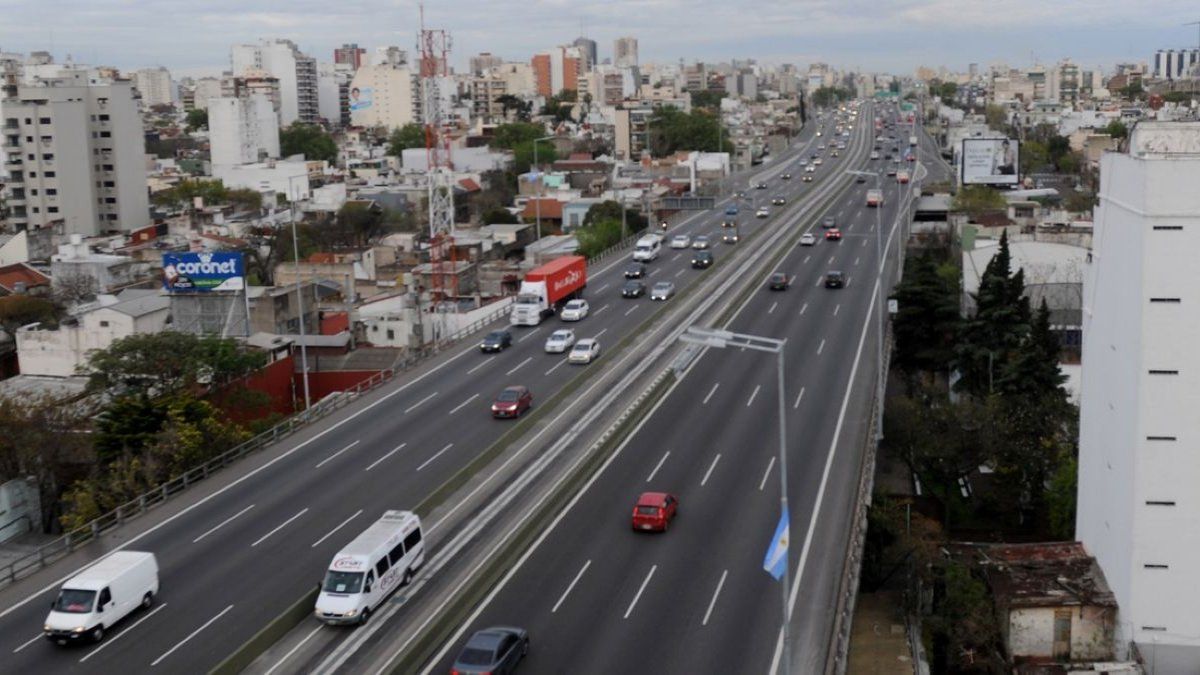Porsche is spicing up the Panamera and bringing the sports sedan up to date with the latest technology. The results include more electric range and improved driving behavior, from which the new Panamera 4S E-Hybrid Sport Turismo also benefits.
The Porsche Panamera shakes the worldview of the Zuffenhausen car manufacturer to its foundations. Not only are the new buyers of the sports sedan, at the age of 47, around eight years younger than the rest of the clientele, but every fifth Panamera key from such a customer goes directly into female hands. No more power toys for tough, mustached gentlemen who move the automobile with a cigar in their mouth, the sporty sedan is Porsche’s gender star.
Hybrids are on the rise right now. In Europe, 250,000 vehicles with a plug-in hybrid drive train went over the counter in the first quarter and Porsche wants its piece of the increasingly electrified pie. Especially since 67 percent of all Panameras sold in Germany are plug-in hybrids and they now have more representatives: The Porsche Panamera 4S E-Hybrid S with its 412 kW / 560 PS and maximum torque is anything but a stopgap.
Rather an alternative for those who prefer a light-footed front end to the brute V8 power of the Turbo S with its 515 kW / 700 PS. The difference between the two models is particularly evident in tight bends, where the Porsche Panamera 4S E-Hybrid turns more agile, while the Turbo S version sometimes pushes over the front wheels. No wonder: the six-cylinder biturbo is 41 kilograms lighter than the charged V8 in the Turbo S. Although torque vectoring prevents this tendency to understeer as much as possible with targeted braking interventions, the well-coordinated control systems cannot undo this phenomenon either. If you don’t necessarily want to be one of the absolute alpha animals in the left lane, the Porsche Panamera 4S E-Hybrid is more than good for you. The performance speaks for itself: from a standstill, the 100 km / h mark is reached after 3.7 seconds and propulsion only ends at 293 km / h. The Porsche developers have also worked on the brakes and refined the transition from recuperation to analog braking in order to improve controllability.
But a Porsche Panamera is not always driven on the edge of the limit area. Daily use shows whether the customer raises or lowers their thumbs. In addition to the new sports tires, which can cope better with transverse joints, the engineers also use softer engine mounts to improve comfort. The idea is completed by improved software that controls the response of the three-chamber air suspension and the dampers more quickly. “This is also a consequence of the increased computing power,” explains series manager Thomas Friemuth. The trick fulfills its purpose: the Porsche Panamera 4S E-Hybrid can be moved comfortably despite its sporty ambitions and its weight of 2,240 kilograms. It is true that the drive train in hybrid mode is not quite as dynamic as it is with Sport and Sport Plus. Porsche specifies a consumption of 2.2 l / 100 km, we came to 11.2 l / 100 km in the test drive, which was mostly carried out in hybrid car mode and in which we overcame a few meters in altitude.
That brings us to the electric powertrain. The electric motor is integrated in the eight-speed dual clutch transmission and contributes 100 kW / 136 hp and 400 Newton meters of torque to the propulsion. This is nothing new. However, with the same installation space, the battery now has a capacity of 17.9 kilowatt hours (net 14.3 kWh), which is 27 percent more than before. A consequence of the more powerful battery cells, which is good for a range of 54 kilometers (according to the WLTP EAER City cycle) and a top speed of 140 km / h. The onboard charger allows a maximum charging speed of 7.2 kW. Somewhat little for a vehicle from a premium manufacturer that costs at least 134,912 euros. “An onboard charger with 11 kW would not have brought enough advantages in terms of charging time. We would also have had to reduce the size of the trunk and the car would have become heavier,” explains technician Mario Grellmann. So the luggage compartment has a volume of 418 to 1,287 liters and the battery is filled in 2:40 hours. However, this charger is only part of the standard equipment of the Turbo SE Hybrid, the others have the 3.6 kWh version on board ex works. We cannot fully understand this surcharge policy. Our test car, which is pretty well equipped, had the 7.2 kW version installed and costs 198,442 euros.
If you look at the model portfolio of the Panamera, a fourth hybrid derivative makes sense. There will be one too. It will probably be a turbo that is integrated between the 4S and the Turbo S, after all, 140 hp gape between these two models. Then the gap would then be filled.
I am a 24-year-old writer and journalist who has been working in the news industry for the past two years. I write primarily about market news, so if you’re looking for insights into what’s going on in the stock market or economic indicators, you’ve come to the right place. I also dabble in writing articles on lifestyle trends and pop culture news.




